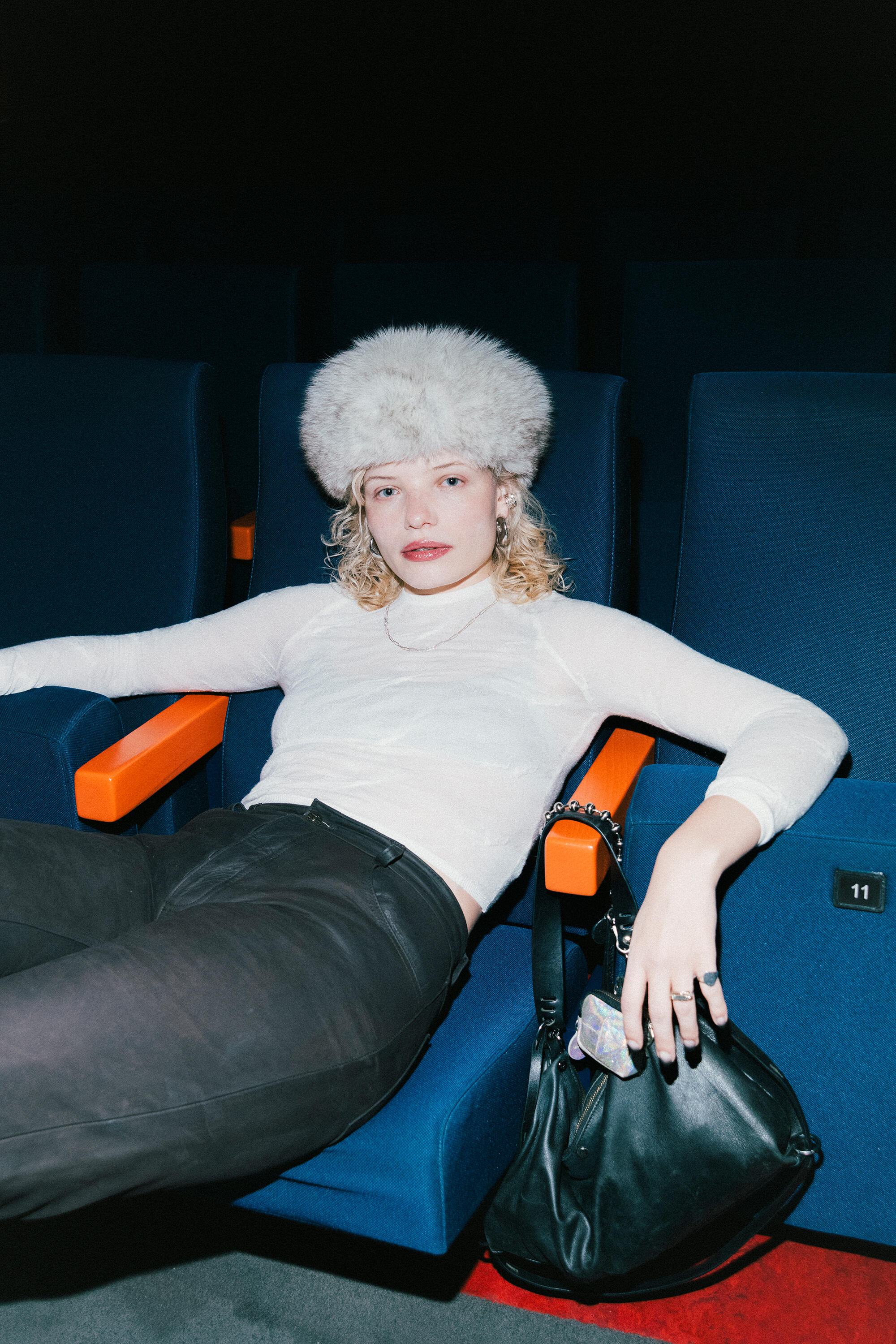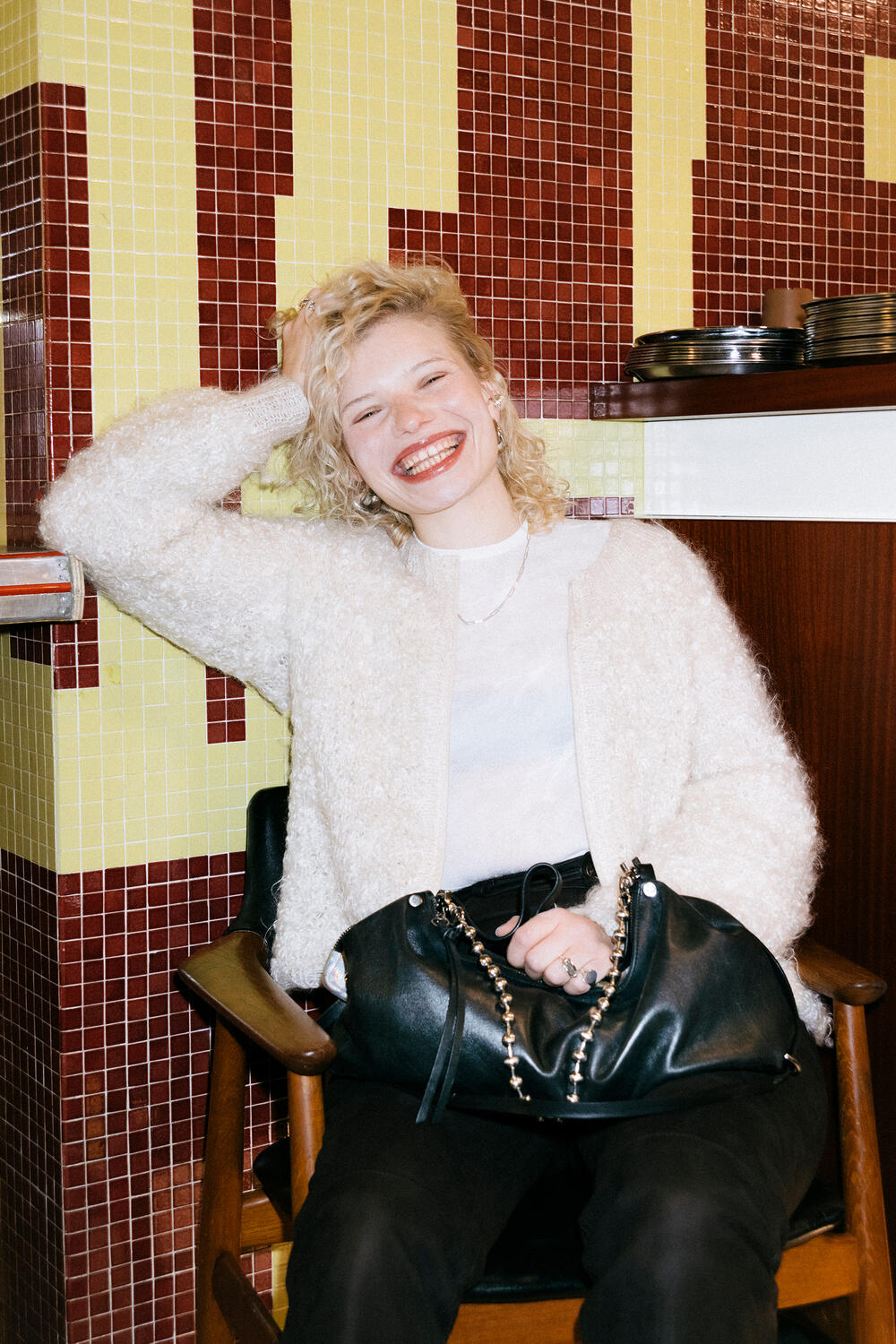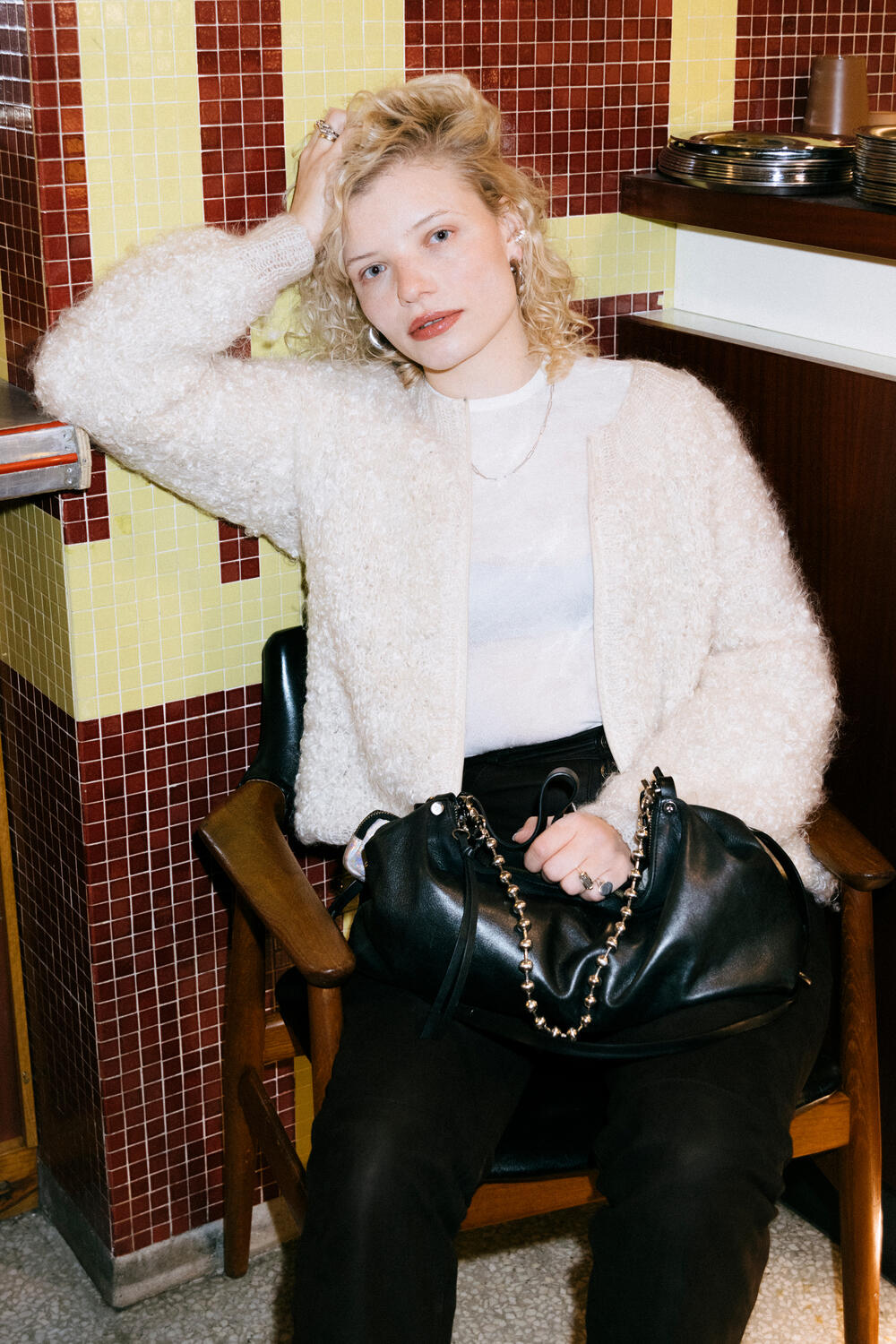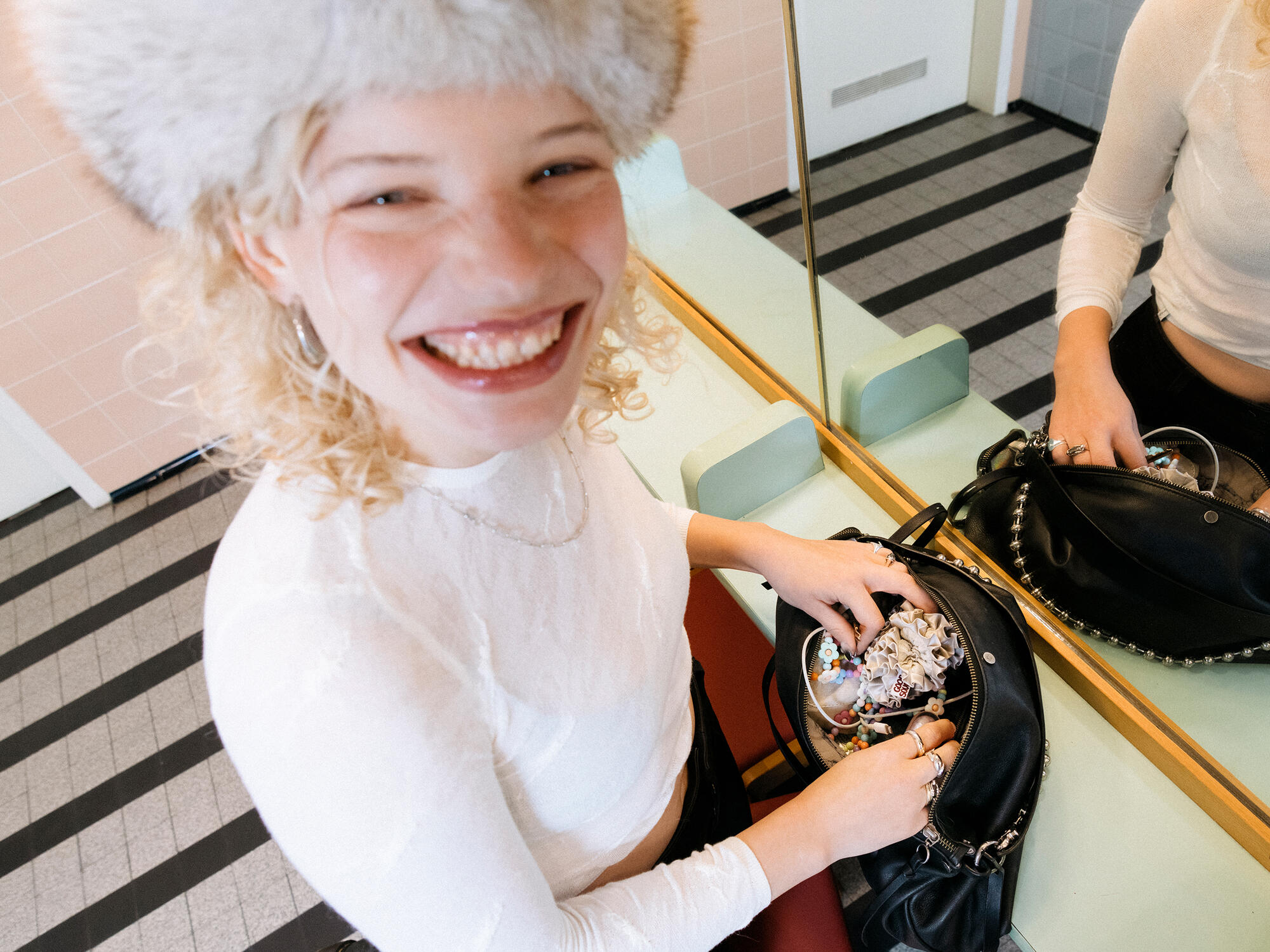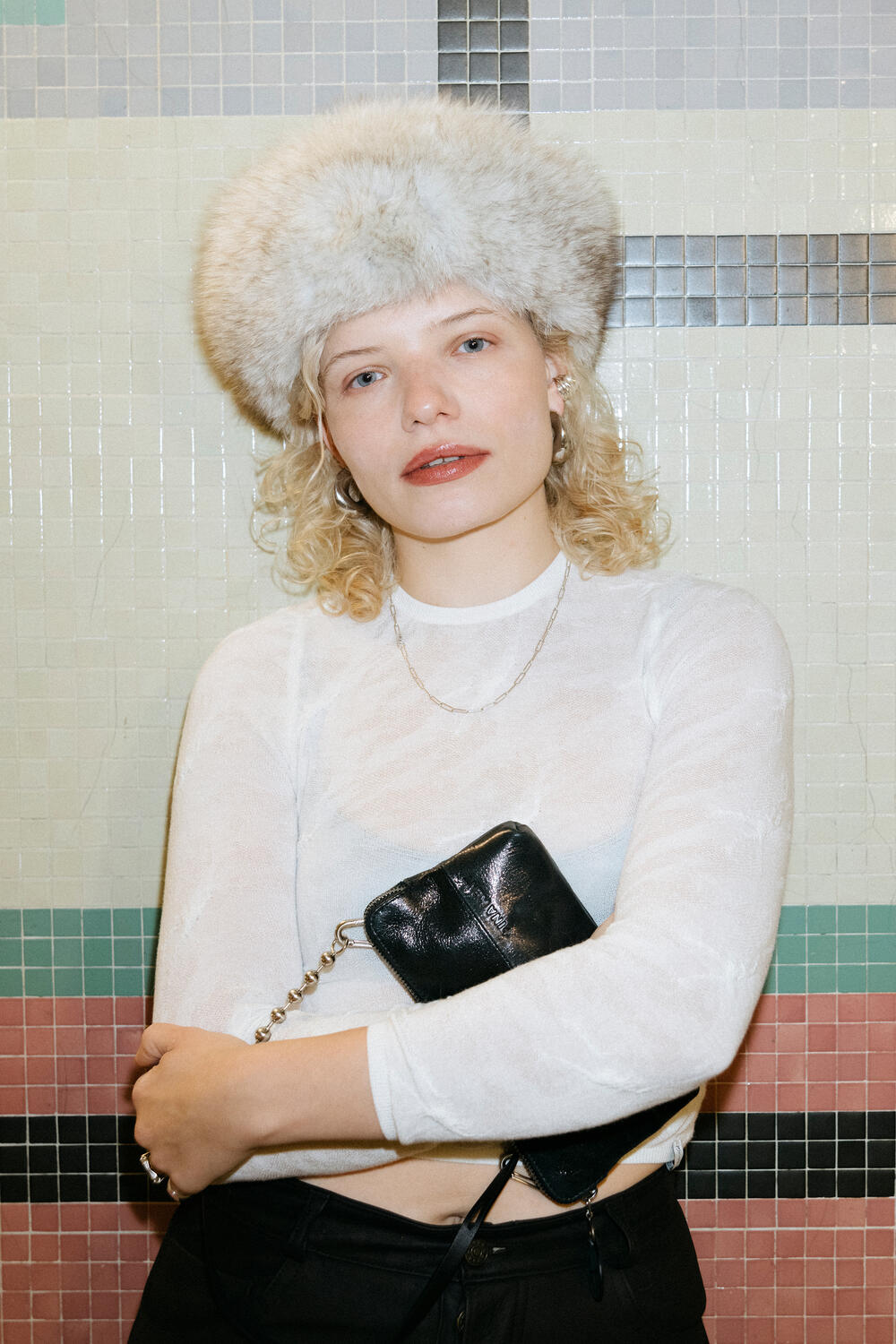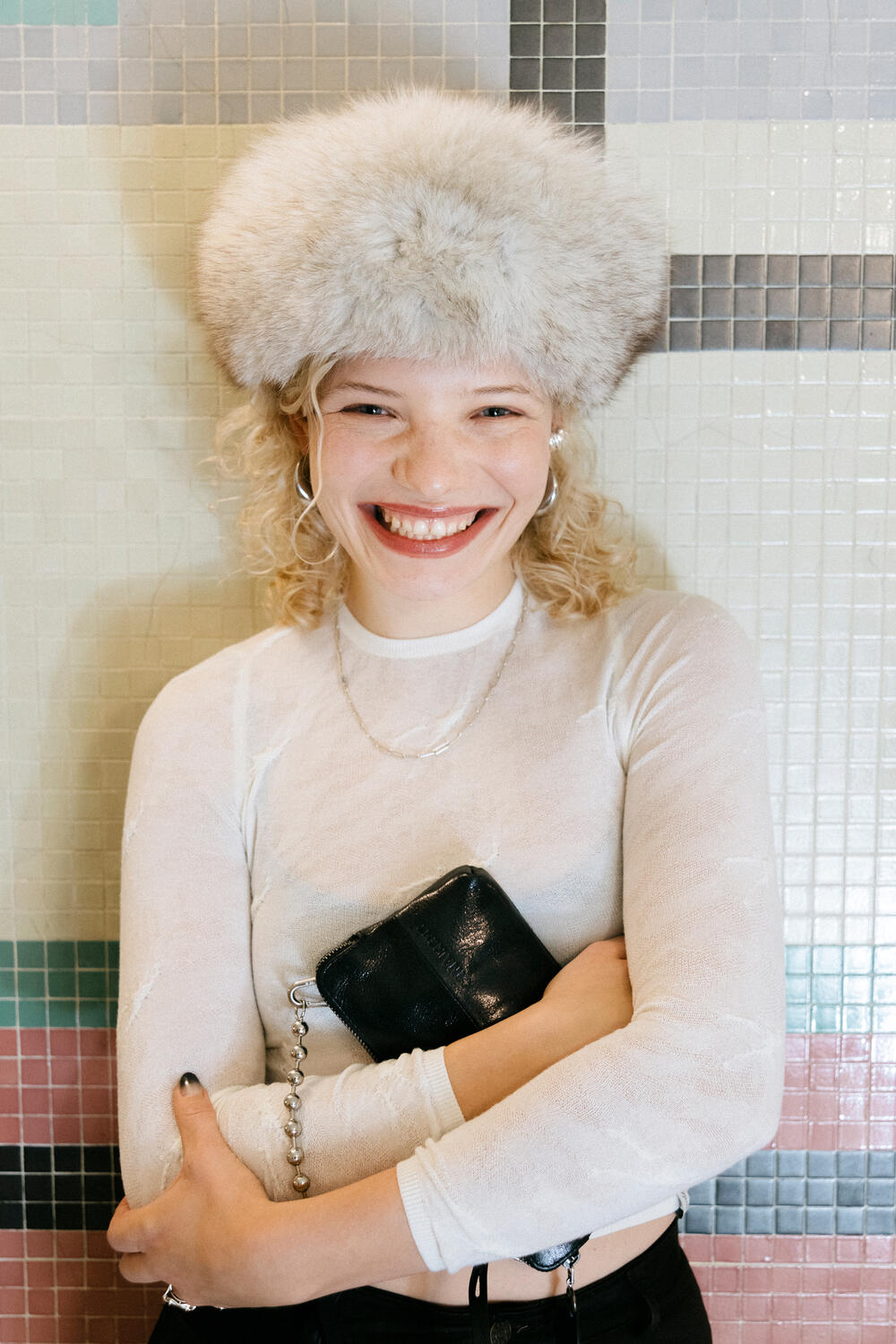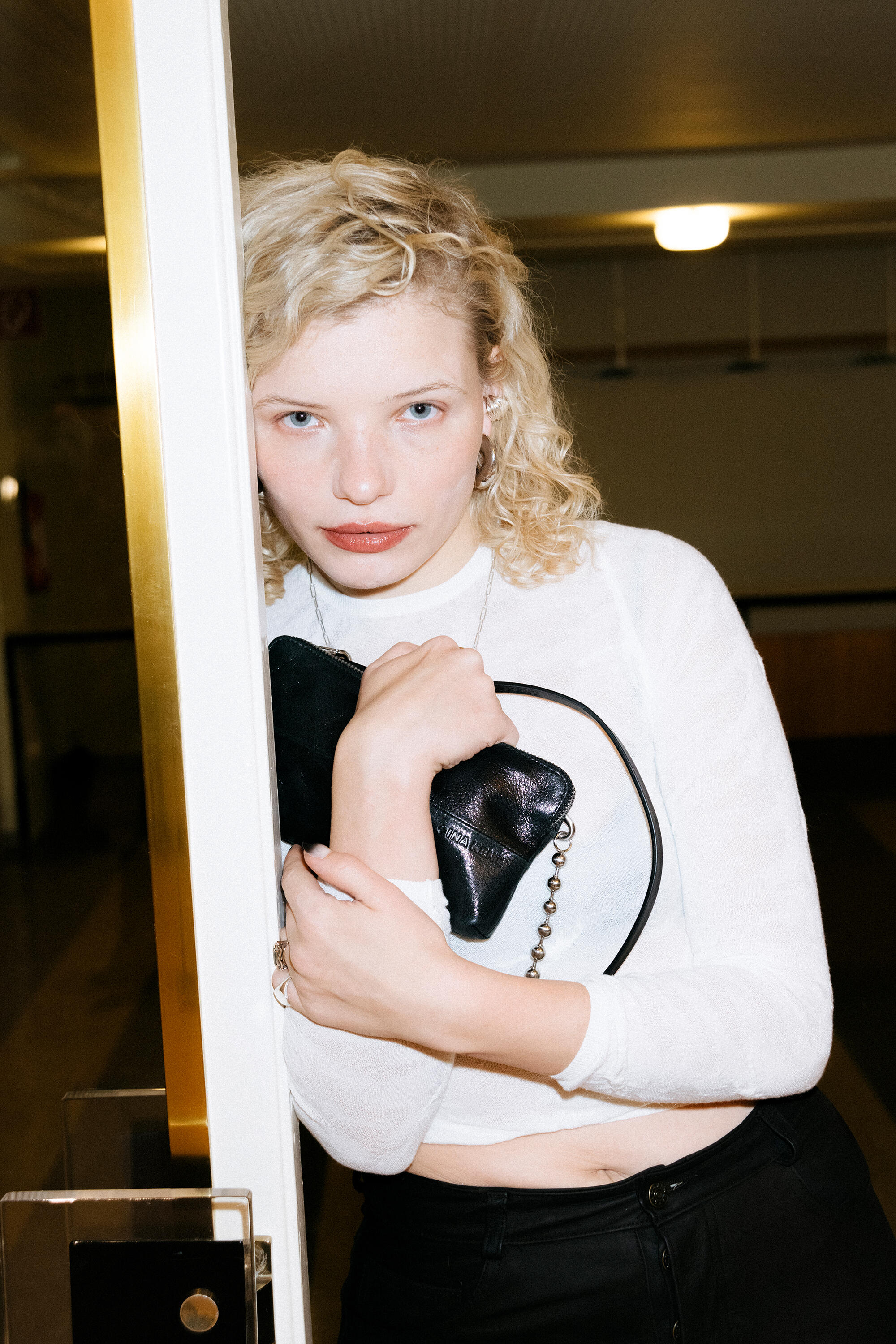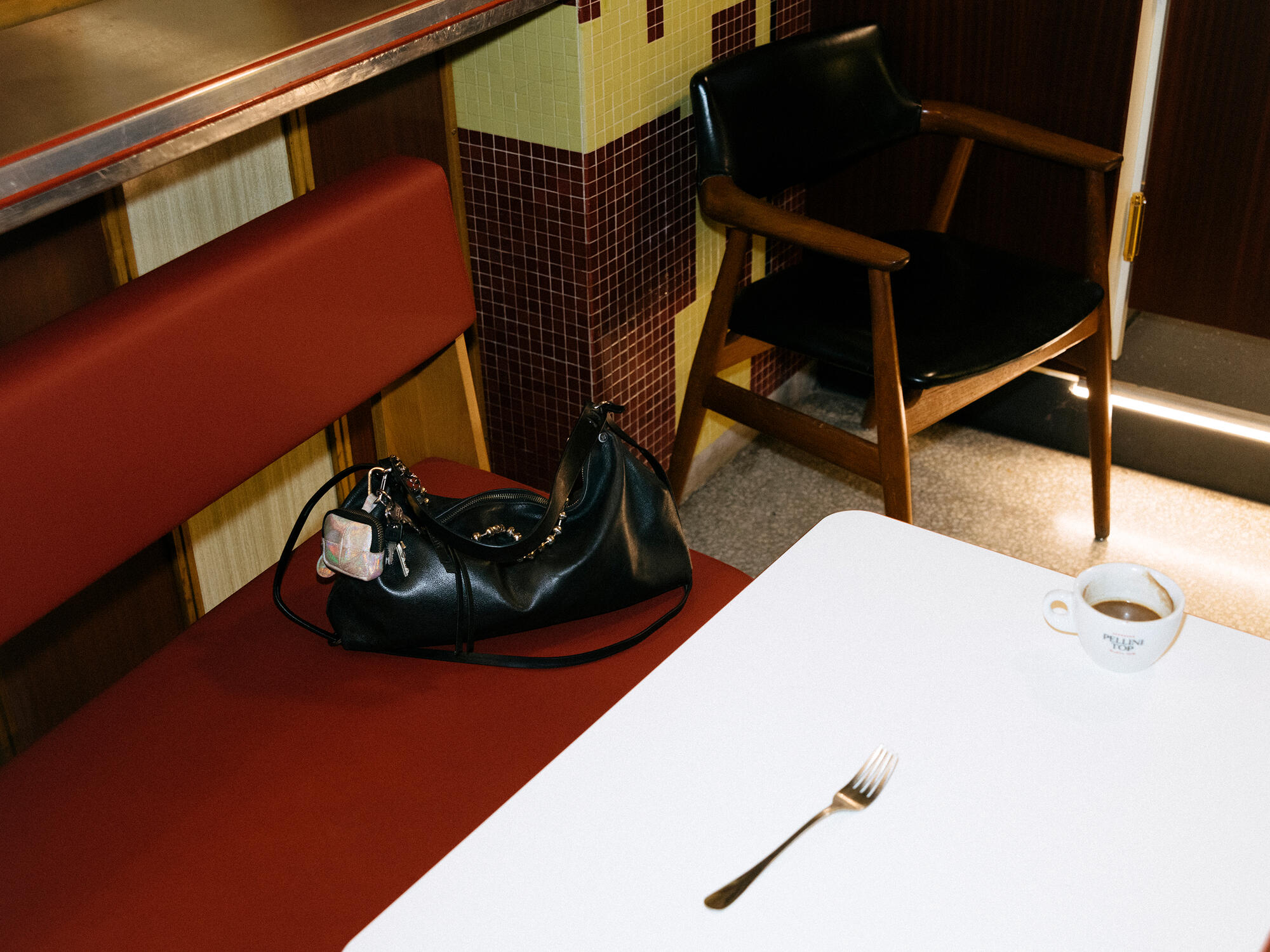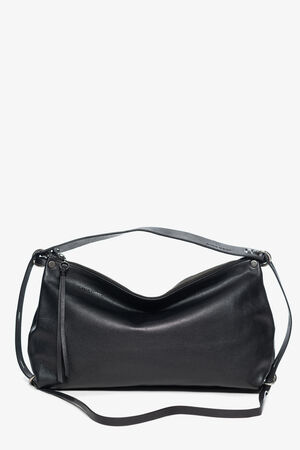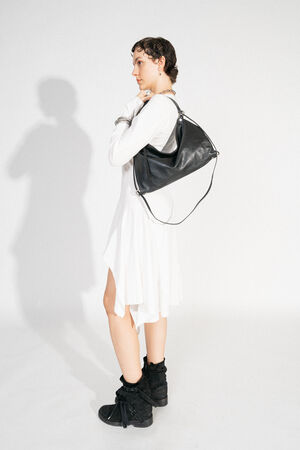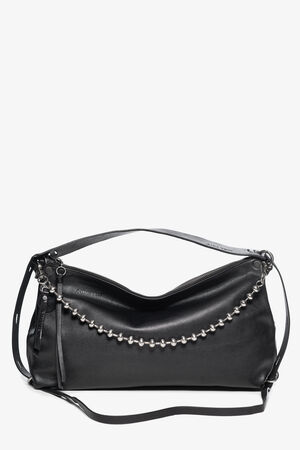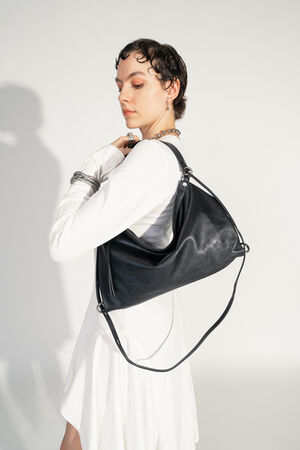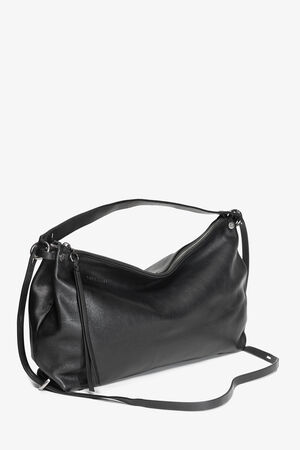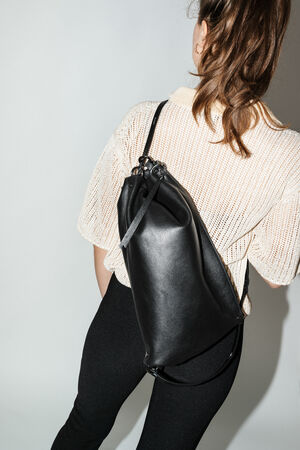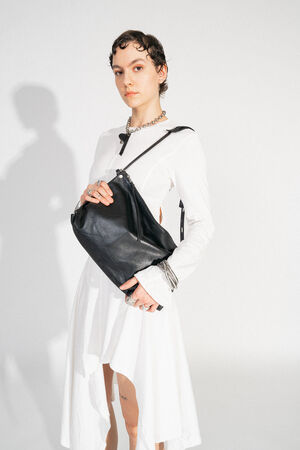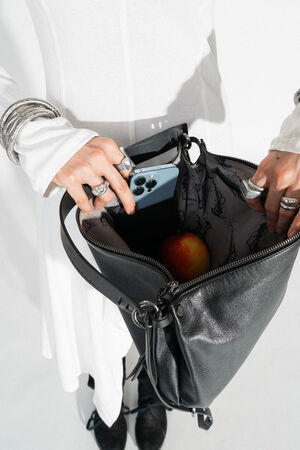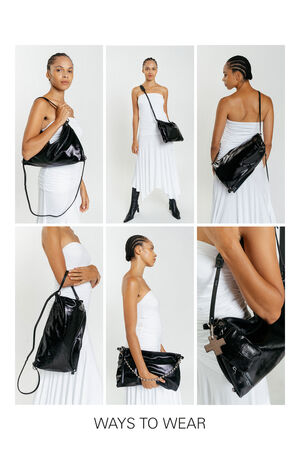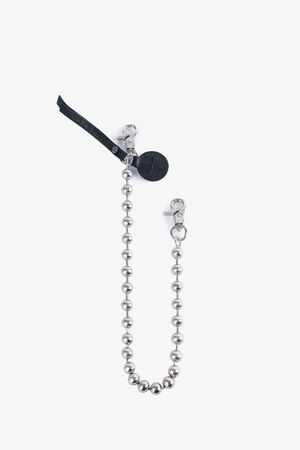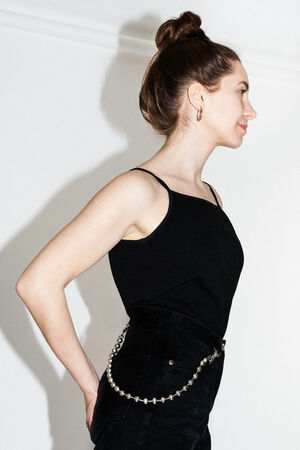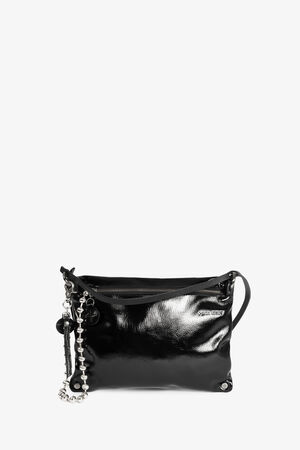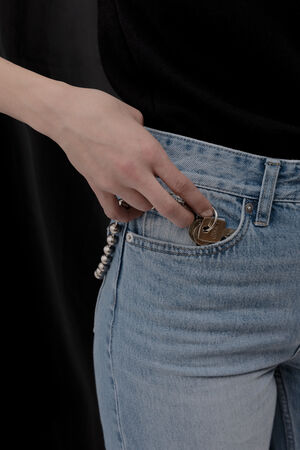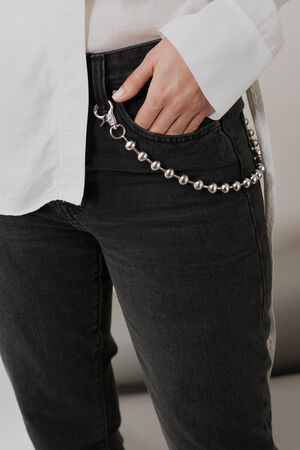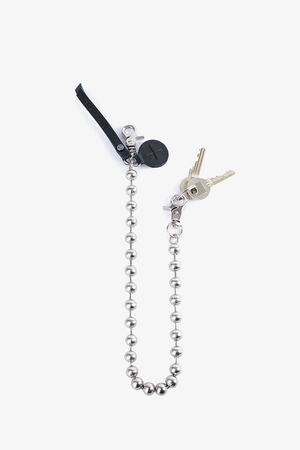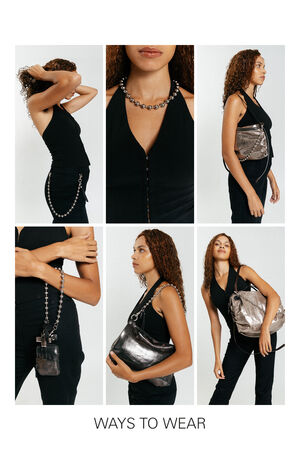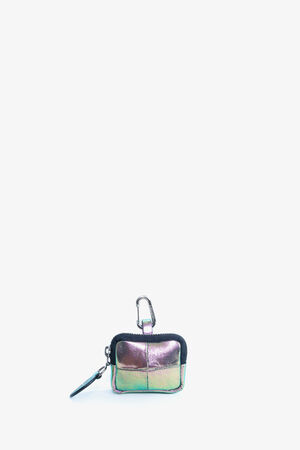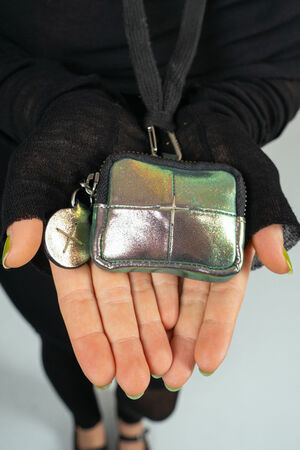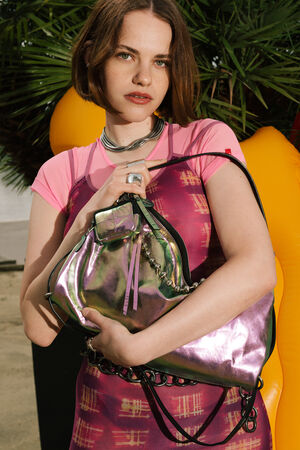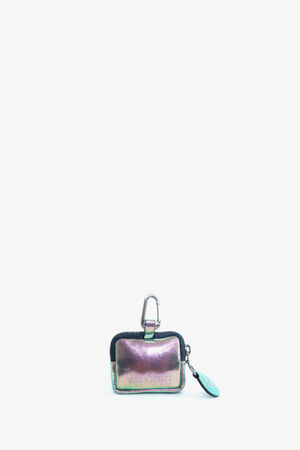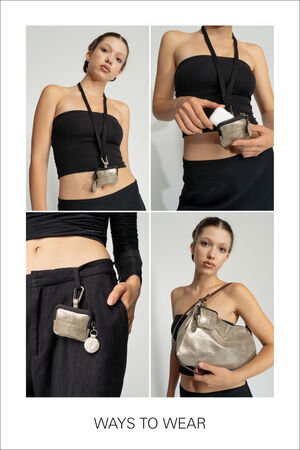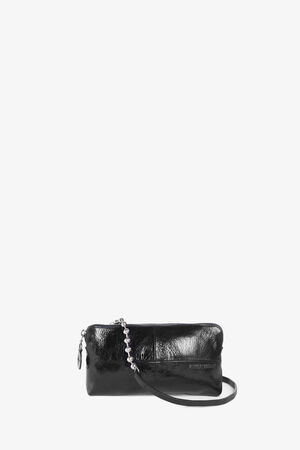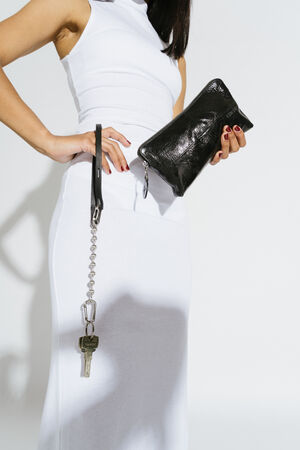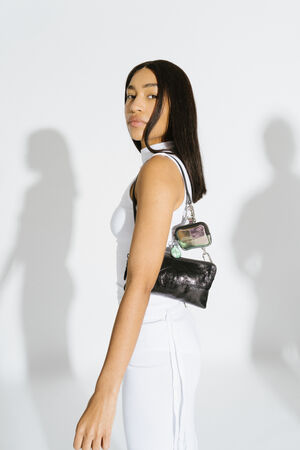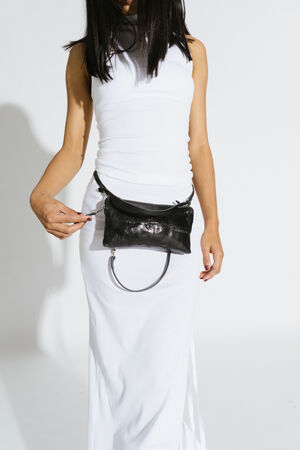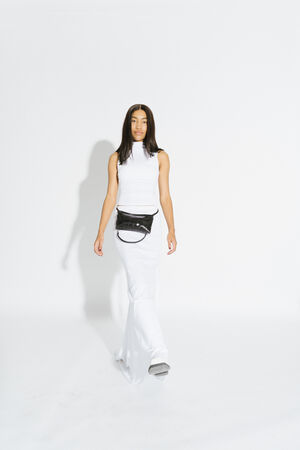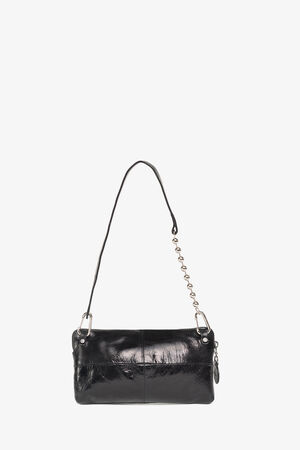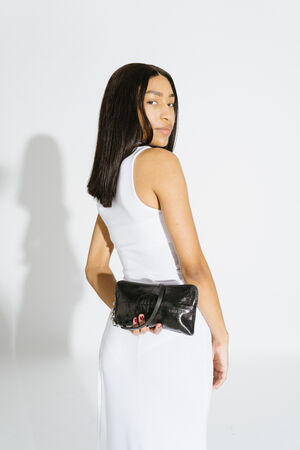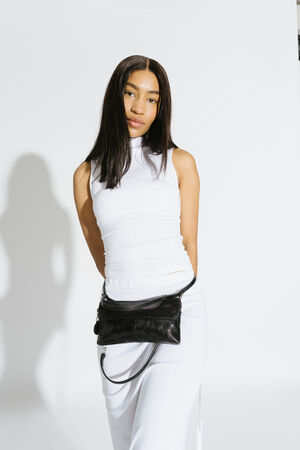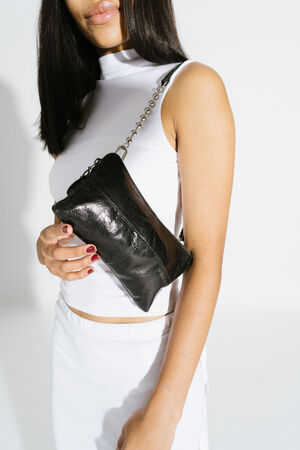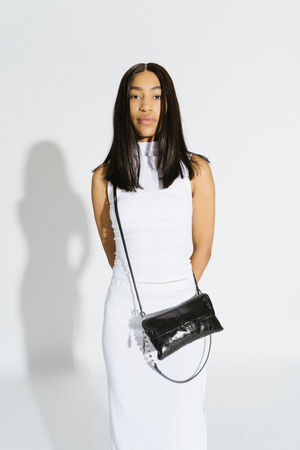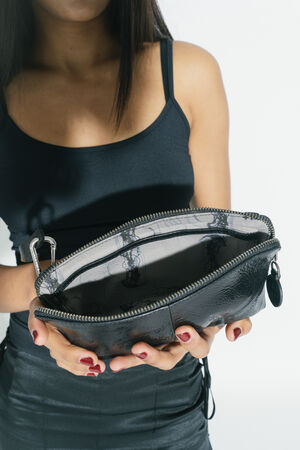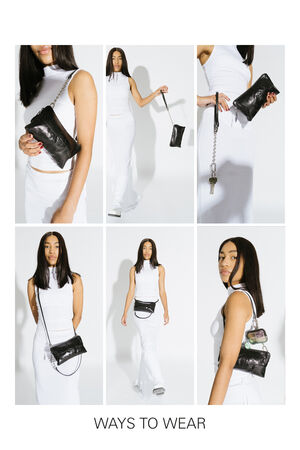Actor and activist Luisa-Céline Gaffron tells stories – on screen, on stage, and everywhere in between. Her characters are sharp-edged, often at a turning point, sometimes unsettling. A conversation about role models, political work that she sees as a given in her art – and bags that can handle it all.
INA KENT meets Luisa-Céline Gaffron
Despite your young age, you already have an impressive repertoire of roles across various genres and formats. Looking back over the past few years, how have you evolved in your craft and approach? Which challenges, encounters, or experiences have shaped you the most? And what has this development revealed about you, both as an artist and as a person?
Our industry is built on collaboration. Many people come together to create something, which makes the process so exciting because of the diversity of perspectives. At the same time, it also means that not everything is within your control. You can contribute, take responsibility, stand up for content, but there will always be factors beyond your influence. Accepting that is a process, too. For me personally, it has meant becoming kinder to myself over time and trusting my instincts more. I allow myself the space to take a clear stance on content while also ensuring that I’m in an environment that supports me and provides the right conditions for me to do my best work. And I’ve learned to stand up not just for the work but also for myself.
During the filming of *Persian Lessons*, Nahuel Pérez Biscayart said something that has stuck with me ever since: *“You just need to ask for what you need to do your job well.”* It may seem simple, but in an industry driven by speed and tight schedules, it’s all the more crucial to clearly communicate what you need in order to work well. And for women in this industry, there are additional challenges, starting with the unspoken expectation to take on care work as a given to the constant need to legitimize oneself over and over again. Then comes that moment when you suddenly realize that your body, whether on set or in the public eye, no longer belongs solely to you but is seen as something collectively available. Withdrawing from that, setting boundaries, and enduring the reactions that follow is not easy. But I don’t think it’s necessarily my job as an artist to be without resistance.
Films and TV series reach a broad audience and undoubtedly have the power not only to reflect social issues but also to spark important debates. Do you think the media have a particular responsibility to engage with political and social questions? And how do you navigate the balance between artistic freedom and social responsibility in your own work?
I think it is essential for media creators to take responsibility, especially when I consider how much my own media consumption shaped my understanding of questions like “Who am I allowed to love? How am I allowed to look? In what way can I move through this world?” That’s why I feel a strong responsibility for the images and worlds we create on stage and on screen. That doesn’t mean we have to avoid “light” or provocative content ... on the contrary, I think it’s crucial that whatever we create or reproduce is framed with awareness and conveys a clear artistic stance. Even a seemingly “light” comedy can hold social relevance if it is cleverly conceived.
Beyond the artistic responsibility that media carry, there is also an economic and structural responsibility within productions. It’s not just about the societal impact of the final product but also about who is given the opportunity to participate in a project and make a living from it. Again and again, it becomes clear how much work still needs to be done ... especially when looking at statistics from organizations like Pro Quote, which reveal how the same patterns are continually reproduced within the industry. And this realization only touches on traditional gender structures, leaving out other intersectional issues that are just as important. The lack of diverse perspectives becomes all the more obvious. That’s why it took me so long to discover different ways of seeing the world and myself ... because they simply weren’t represented in my youth.
For my own sense of identification, books and fictional characters were incredibly important, as I grew up without a television. But when I think back to the pop-cultural figures of my youth ... the body types, gender identities, and sexualities that were considered relevant at the time ... the image that emerges is incredibly homogeneous, and certainly not one that inspired self-acceptance.
I want the stories I help bring to life to make people feel seen ... or, when appropriate, to challenge them. Either way, I want to spark engagement. I also think it’s important to pay close attention to evolving cultural narratives and discourses, as they are constantly shifting and taking new forms. As an actor, I shape my characters with an awareness of the present moment. What kind of portrayal or perspective have I not seen enough of? What effect does a particular representation have? Right now, for example, we are seeing a wave of films exploring the theme of “female rage” ... a relatively new development that might be viewed entirely differently in ten years, perhaps even as outdated or cliché. Who knows? A few years ago, everyone was searching for “strong female characters,” whereas today, many people around me are questioning why, when, and whether women need to be strong at all. The freedom to explore new perspectives exists because others before us made them visible.
In a recent interview, you spoke about the importance of a united Europe. Looking at 2025, how do you see your European dream? What’s your vision for Europe, and what role do you see for yourself in it?
Right now, hope is something we could all use a little more of. But despite everything, I still see so many people who believe in the idea of Europe – a Europe that doesn’t let people drown at its borders, a Europe where solidarity matters more than profit.
I’ve never really thought of myself as just Austrian or just German – my family’s roots stretch across Poland, Latvia, and Germany, I grew up in Austria, my French surname comes from my ancestors, and now I live in Germany. Trying to fit that into a single national identity just wouldn’t make sense. That’s exactly why I hope we can build a Europe that embraces the coexistence of different cultures. That, to me, is what Europe is all about, and that’s what I’ll keep standing up for.
You're not just an actor but also politically active. How do you navigate the space between these two worlds? Do you see acting as a way to express your beliefs and activism, or do you sometimes appreciate the distance it offers?
For me, art and politics go hand in hand – I don’t see them as separate at all. If anything, the idea that they are is more of an outside perception than something I’ve ever struggled with internally.
I honestly can’t imagine doing this job without engaging with political or social issues. Film, in particular, creates a huge space for reflection and debate. And that’s what makes it so special – it’s the product of many different people working together, yet it still allows for individual perspectives and stances to come through.
At the end of the day, my work is always a dialogue with the world around me. Sometimes that takes the form of a film, sometimes it’s a speech at a demonstration, sometimes it’s public, and sometimes it happens quietly in the background. But it’s always part of the same conversation.
You recently wrapped filming "How to Be Normal", where you play the lead – a character struggling with bipolar disorder. An authentic portrayal of this condition was particularly important to you. Would you say your approach to the role was shaped by your sense of artistic responsibility – specifically, by how film can challenge social stereotypes about mental illness?
I think that’s exactly where the difference between political and artistic work lies. As an artist, I can’t truly understand a character if I don’t find a way to connect with them and instead simply judge them. Especially in today’s political climate, it feels more important than ever to be empathetic, to hold back on quick judgments, and to try to understand the logic behind someone else’s perspective. That’s where the power of film really comes in – it creates spaces where we can step into unfamiliar worlds and ways of thinking.
I’ve played many characters who make choices I would never make myself. And yet – or maybe because of that – I find it so enriching to engage with them. It reminds me how complex, contradictory, and sometimes completely unpredictable human nature is. And it helps me understand why people act the way they do.
Of course, I hope our film gives some viewers a deeper understanding of mental illness. I learned a lot during the research and filming process. But more than anything, I grew incredibly fond of this character. Even in all the heaviness and drama, I found strength and humor in her – and I hope the audience does too. I think one step toward destigmatizing mental illness is remembering that you’re always looking at a person, not just a diagnosis or a “problem.”
What can we expect to see from you on screen, TV, or stage this year?
Alongside "Der Palast", which just aired on ZDF, I’m especially excited that "How to Be Normal" will premiere at the Berlinale, then head to festivals before its release in Austrian cinemas. I can’t wait to see how people respond and to have conversations about it – especially because I’ve developed such a deep love for this character and can’t wait to finally set her loose in the world.
Your secret celebrity crush?
Cate Blanchett
Have you seen a really great film this year?
Yes… La Cocina and All We Might Imagine As Light.
Your favorite spot in Vienna?
Das Kleine Café – ideally after watching a film at Gartenbaukino and discussing it over coffee.
Your guilty pleasure when it comes to films or series?
I’ve actually started watching reality TV… which, last year, turned out to be essential for my mental well-being.
What’s been on repeat on your playlist lately?
- Hold Your Own – Kae Tempest – a track that feels perfectly in tune with the present and the realization that we should be kinder to ourselves.
- Polished – Rosa Anschütz – she composed the soundtrack for How to Be Normal, and it’s truly fantastic.
- One of my best friends, Keboo, is an incredibly talented musician… her latest song Muss los is another track I can’t stop playing.
How do you feel about fashion, especially in the tension between Brat Girl, hedonism, and calls for restraint?
What I’ve learned is to stay true to what inspires me and makes me feel strong. Through my own political journey, I’ve realized that dogmatism alone won’t save the world, but carelessness and a lack of imagination aren’t exactly sexy either. So it’s about enjoying what you wear and appreciating what you already own – but also knowing you don’t have to follow every trend.
If you find joy in dressing, you automatically get more creative and can keep rediscovering the pieces you have. We’re a generation of women who can be punk, antifascist – and do it all in high heels and lipstick. That didn’t exist when I was a teenager. And honestly, questioning someone’s political engagement just because they don’t fit a certain stereotype? That’s deeply misogynistic.
You and your INA KENT bag (DINKUM)… do you have a particular bag story that sticks with you?
There’s not just one story, but I treat my bag the way Jane Birkin treated hers. Which means it’s been through a lot. A handbag has to go out with me at night but also sit in the mud at a protest – while carrying everything I need: lip gloss, a book, and maybe even a bikini or a scarf. And my DINKUM does all that. It keeps quiet about the stories it’s been part of, but trust me, it’s seen a lot.
One item you’ll only find in Luisa’s bag?
A sticker that’s been floating around in there forever – from my friends’ NGO (CADUS) that says “Fuck Charity, Love Solidarity”… and somewhere next to it, a fortune cookie slip that reads “Du bist cool.” 😊
If you could ask Ina Kent – the designer (yes, she actually exists!) – one question, what would it be?
When do you feel strongest?
LUISA'S BAGS:
Thank you Gartenbaukino Wien!
Photography: (c) Pascal Schrattenecker
